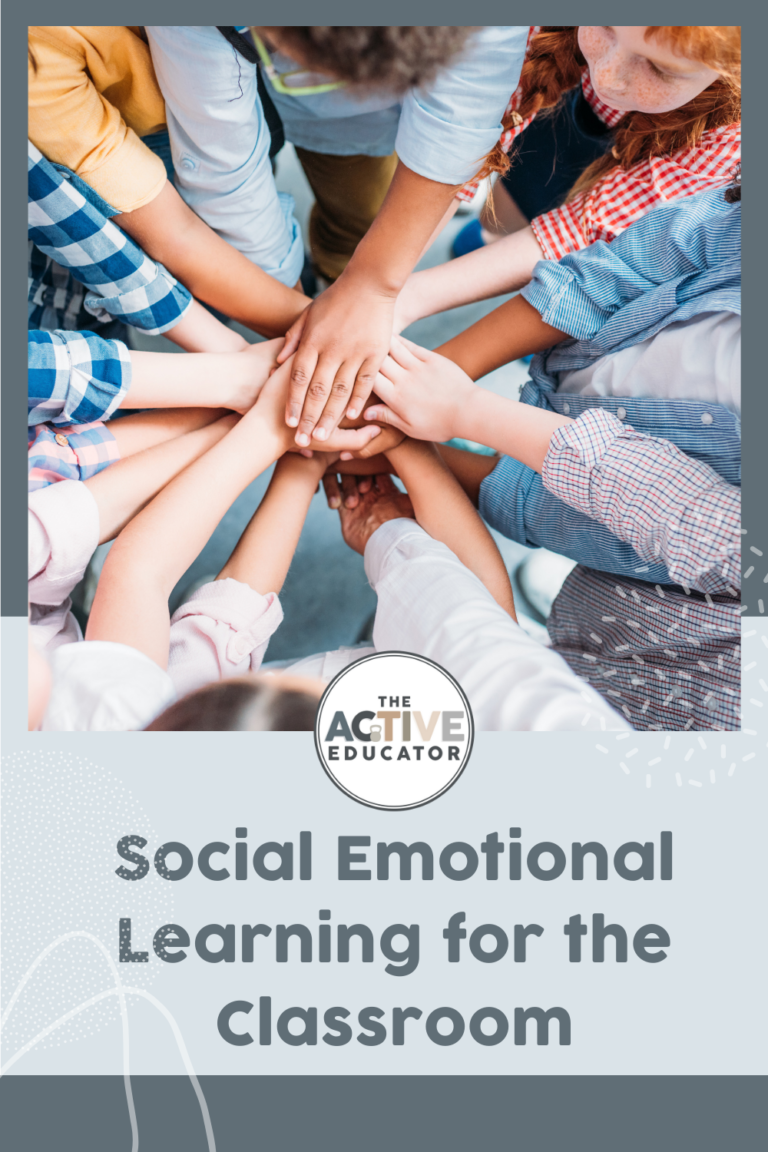Six Social Emotional Learning Skills for the Classroom

Kids, especially little learners, need social emotional learning skills to be successful at school, home, and for the rest of their lives. These are the skills that help them build confidence, work well with others, develop strong relationships, and make positive decisions!
School is one of the primary places where students learn social and emotional skills. Incorporating a social emotional learning (SEL) curriculum into your classroom can have so many benefits! I’ve seen it firsthand in my own classroom. I truly believe you need to start with SEL in your classroom. Students will be able to manage themselves effectively, understand and respect the perspectives of others, and make positive choices.
What is SEL?
Social emotional learning (SEL) is the process through which students learn the social emotional learning skills. Then, they apply skills to understand and manage emotions, set goals, foster positive relationships and practice making good decisions.
There are many ways to incorporate SEL into your curriculum. First, it starts with teaching and modeling effective social and emotional skills in the classroom. Then, you want to provide opportunities for students to practice those skills. Lastly, you’ll give your students an opportunity to apply these skills in different situations. There are six main social emotional learning skills that are extremely important to incorporate into your curriculum. Integrating these skills into your classroom not only creates better academic success, it also gives students a firm foundation to stand upon for the rest of their lives.
Relationship skills
This is such a crucial skill for our students to have. Relationship skills help our students to create and maintain positive and healthy relationships with others in their lives. When students have good relationship skills, they are able to communicate, listen, work with others and work through conflict easier.
Responsible Decision-making
Responsible decision making involves learning how to make positive choices about one’s own behavior and interactions. It can also look like identifying and solving problems, evaluating choices and reflecting on past decisions.
Self-awareness Skills
Having self-awareness means knowing and understanding your own emotions. This could look like identifying your emotions, having self-confidence, self-efficacy and recognizing your strengths and weaknesses.
Coping Skills
Coping skills are extremely important to practice and model. These skills include providing students with different techniques to manage emotions that occur each day. In stressful situations, having coping skills to pull from to deal with stressful or new situations.
Self-Management Skills
If our students have proper self-management skills, they will be able to regulate and manage their own behaviors and emotions. This will help them to manage stress better, control impulses and show resilience and persevere when they face challenges.
Social Awareness Skills
Social awareness skills allow our students the ability to empathize, sympathize and understand different perspectives and backgrounds. These skills can help our students to understand and appreciate differences, while also showing respect for our peers.
The biggest thing to remember is that an effective social emotional classroom isn’t just one thing. It’s an approach that brings all of these aspects into your classroom to support your learners every day.
If you’re interested in learning more about incorporating these six SEL skills, be sure to check out the video below! I share more about SEL curriculum and my personal experiences from incorporating into my classroom!
You can also purchase my entire SEL curriculum here!
View this post on Instagram




